USS Grayback (LPSS-574): SEAL host submarine
 At the height of the Cold War and Vietnam Wars In the mid-1960s the US Navy planned to convert two nuclear deterrence guided missile submarines into dedicated Special Forces host submarines. The diesel-electric powered Grayback Class had been designed in the 1950s to provide an interim nuclear deterrent capability while more capable nuclear-powered vessels were brought into service. Armed with four aircraft-sized Regulus nuclear cruise missiles the submarines had to surface to launch their nuclear strike. The Regulus was deemed obsolete by the successful introduction of the Polaris submarine launched ballistic missile (SSBM) which could be launched from a submerged submarine and the follow-on Regulus-II was cancelled, making the Graybacks quickly obsolete. The Regulus were stored in two large hangars above the torpedo room making the Grayback Class ideal for conversion into special operations submarines.
At the height of the Cold War and Vietnam Wars In the mid-1960s the US Navy planned to convert two nuclear deterrence guided missile submarines into dedicated Special Forces host submarines. The diesel-electric powered Grayback Class had been designed in the 1950s to provide an interim nuclear deterrent capability while more capable nuclear-powered vessels were brought into service. Armed with four aircraft-sized Regulus nuclear cruise missiles the submarines had to surface to launch their nuclear strike. The Regulus was deemed obsolete by the successful introduction of the Polaris submarine launched ballistic missile (SSBM) which could be launched from a submerged submarine and the follow-on Regulus-II was cancelled, making the Graybacks quickly obsolete. The Regulus were stored in two large hangars above the torpedo room making the Grayback Class ideal for conversion into special operations submarines.
Original artwork. CLICK for high-resolution image.

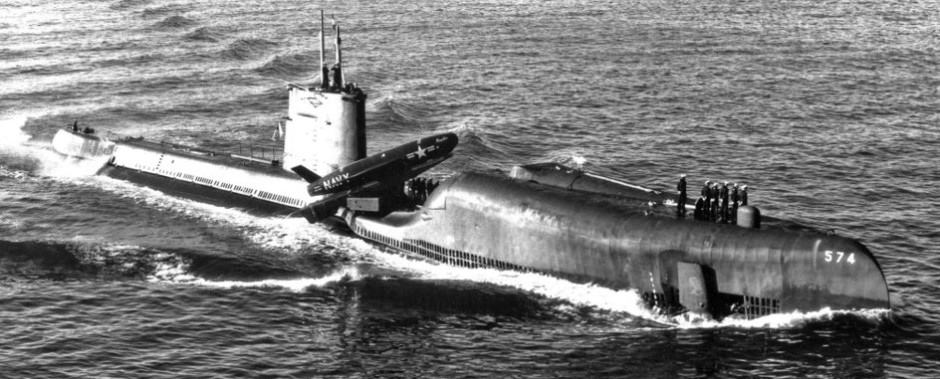
USS Grayback prior to conversion with a Regulus-I cruise missile ready for launch.
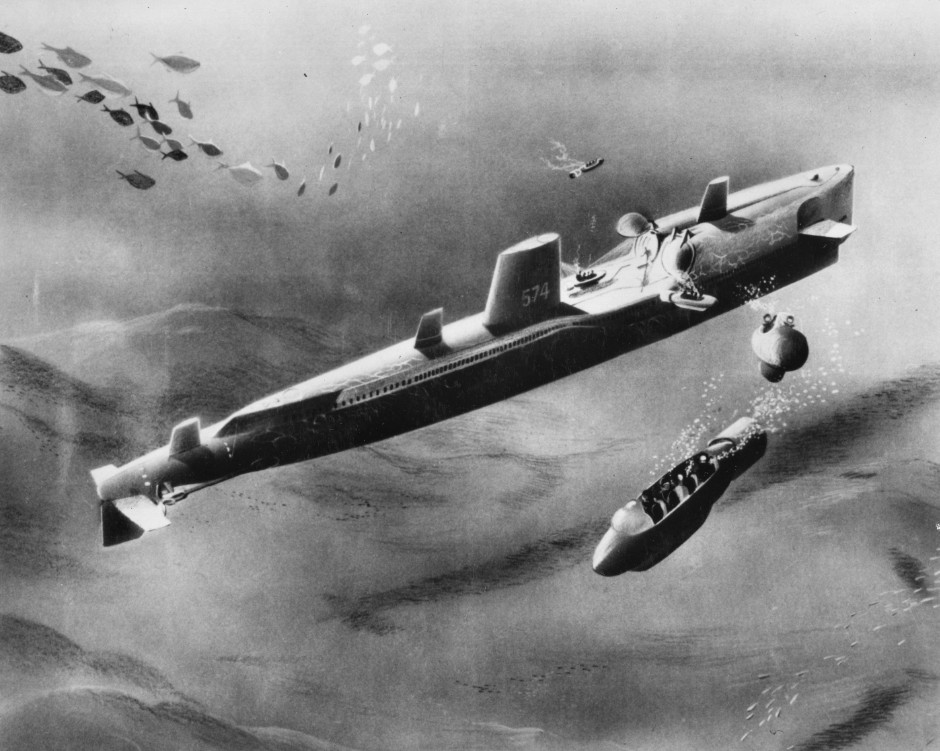
US Navy concept art of USS Grayback launching Swimmer Delivery Vehicles (SDVs). The SDVs depicted are loosely based on the Cos.Mo.S TRASS-III which was operated by the US Navy SEALs and UDT at the time but rarely (if ever) carried aboard Grayback.
The only nuclear-powered Regulus boat, USS Halibut was also to be converted for special missions, although of a different kind. Main article:
 USS Halibut
USS Halibut
As it transpired the conversion of USS Grayback cost twice as much as budgeted and used up all the money for the second conversion (USS Growler) so only one was ever converted to a Special Forces sub. She was extended to be marginally bigger than the previous special forces transports (USS Tunny, USS Perch and USS Sealion) and could carry double the SDVs, fitting four Mk.VIIs in without any restrictions. Her conversion had begun in 1967 to coincide with USS Perch’s retirement and had cost a staggering $30 million, with her rejoining the fleet as an Amphibious Transport Submarine (LPSS) in May 1969.
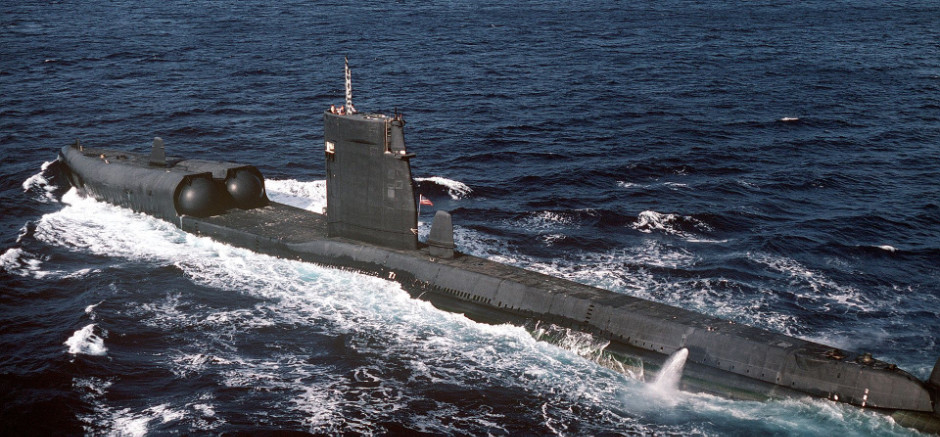
The ultimate book of Special Forces subs Covert Shores 2nd Edition is the ONLY world history of naval Special Forces, their missions and their specialist vehicles. SEALs, SBS, COMSUBIN, Sh-13, Spetsnaz, Kampfschwimmers, Commando Hubert, 4RR and many more.
Check it out on Amazon
Get The essential guide to World Submarines
This Covert Shores Recognition Guide Covers over 80 classes of submarines including all types currently in service with World Navies.Check it out on Amazon
The hangars were modified to allow them to be flooded and drained while submerged, so that the SDVs could swim in and out without the submarine having to surface. The port hangar was also modified to contain a decompression chamber which was critical to launching and operating the SDVs at deeper depths. During conversion the forward deck was simplified to ease operations, although this meant removing the streamlined doors that were faired down into the deck. This likely impacted performance, but overall the refit was a significant update to an obsolete missile boat, transforming her into the world’s most capable Special Forces submarine.
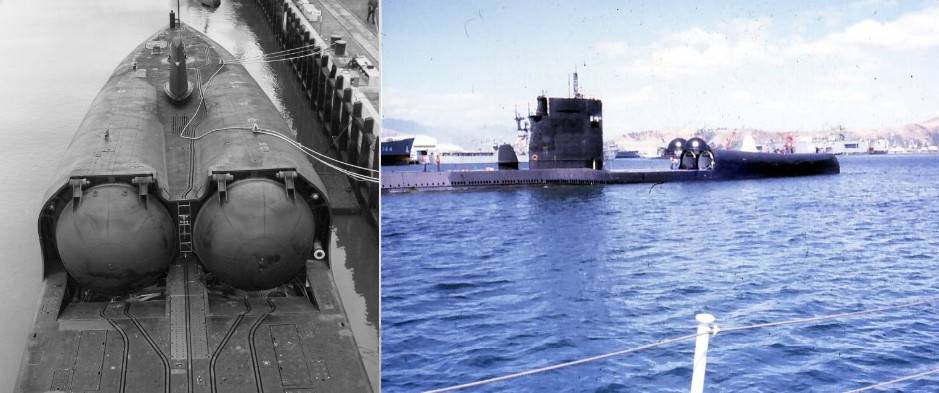
USS Grayback with twin integral hangars. Photo courtesy of the RAN Clearance Diver’s Association.
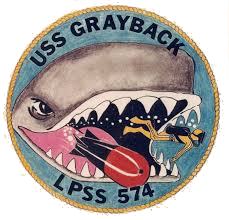 USS Crunchback
USS Crunchback
Grayback soon earned the nickname ‘USS Crunchback’. This came after an accident involving an SDV Mk.VII in 1971 while exercising with the West Coast’s UDT-12 off Subic Bay in the Philippines. The massive hydraulic doors were closed while the SDV was still halfway outside the hangar. Amazingly no one was hurt, and the hangar door was not seriously damaged, but the SDV was crushed like a toy. It was like watching a car get hit by a truck in slow motion, and the story soon spread.
The SEALS: Operation THUNDERHEAD
By the final years of the Vietnam War the focus of SEALs missions had shifted from the waterways to operating deep inland alongside Army Special Forces and the Australian Special Air Service Regiment (SASR). SEAL missions were often airborne rather than waterborne with insertion and extraction by helicopter with only a few hours of ground fighting in the middle.
The first and last outing for the SDVs north of the border was in early 1972. Two US airmen who were being held as Prisoners of War (PoW) in the infamous Hao Lo prison, better known as the ‘Hanoi Hilton’, hatched a plan to escape. A massive US Navy operation was planned involving SEALs from ST-1’s ready platoon and SDVs from UDT-11. The SEALs and UDT men boarded USS Grayback in Subic Bay and, after a period of training headed for the North Vietnamese coast. Until now all SDV operations had been conducted off South Vietnam, which although a war zone, was not an enemy country. The SEALs were led by Lt. Melvin Dry of ST-1, who had previously served with UDT-13. Like all SEALs it goes without saying that he and his men were expert in the water and worked seamlessly with the SDV men of UDT11.
Secret contact was maintained with the prisoners and it was learned that they planned to escape and steal a small boat, and then make their way down the Red River to the Gulf of Tonkin about 75 miles (120km) downstream from Hanoi in the vicinity of 20°13'49"N, 106°36'35"E. Although the US Navy enjoyed clear naval superiority, the waters off North Vietnam were both tactically and politically dangerous. President Nixon was attempting the ‘Vietnamization’ of the war which really meant extracting America from it, and did not need a major naval incident. So any rescue mission had to be clandestine. On the 15th May the overall scheme was approved and the wheels set in motion. The plan was developed to insert a two-man SEAL team to a position where they could watch for the escaped prisoners, who would signal using a red light. The islands around the entrance to the river were garrisoned by North Vietnamese Army (NVA) forces, and the waters patrolled. Additionally there was significant local fishing activity which also risked compromising the operation. The SEALs, Lt. Dry and CPO Martin, would be equipped to remain on the island for up to 48 hours watching for the signal. They would then rendezvous with the prisoners and arrange pick-up by waiting units of the US 7th fleet. Reconnaissance and insertion of the team was to be conducted by the SDVs
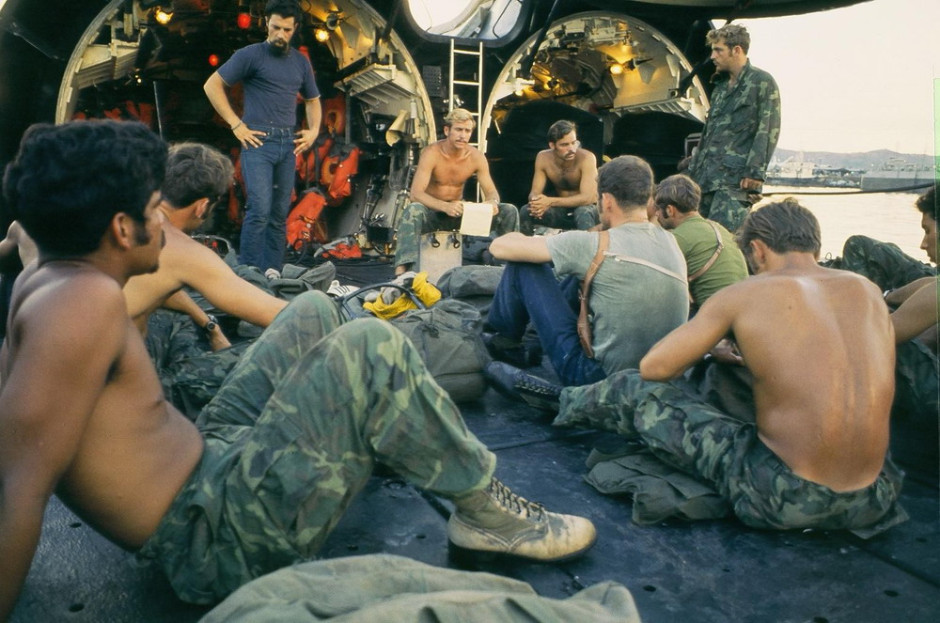
SEALs prepare for Operation THUNDERHEAD in front of Grayback's hangars. Lt. Dry is seated facing the camera holding papers.
On 3rd June the submarine arrived on station and an SDV Mk.VII was launched to carry out a reconnaissance of the island prior to landing the team a few nights later. The crew consisted of two UDT men and two SEAL men, including Lt. Dry. By this time the Mk.VII was considered a reliable piece of kit by many although in the minds of some involved it was still unproven and the long, cold and cramped journey was still something of an unknown quantity. Because of strong tides the SDV was launched at the end of the flood tide so that it could run in on slack water, and then recover on the ebb tide which should help carry it back to the waiting submarine. Once launched the SDV started to get carried off course by the 2kt current, and the crew became lost. After searching for over an hour they had not sighted the island and the SDV reluctantly had to try to head back to the submarine. In the event the currents off the coast were too strong for the small motor on the sluggish craft and its batteries ran out before they could return to the Grayback. Stranded in enemy waters, the SDV crew treaded water and considered their options. At this time as at others, Lt. Dry rallied the men and kept them together. The next morning they were picked up by a rescue helicopter. Fearing that the SDV might be washed up on the beach or found by the NVA, they sunk it using the helicopter’s machinegun. This prevented detection and maintained the secrecy of their presence. Lt. Dry’s leadership and tactical knowledge was considered vital to the future success of the mission so he was allowed to return immediately to the Grayback to continue the mission.
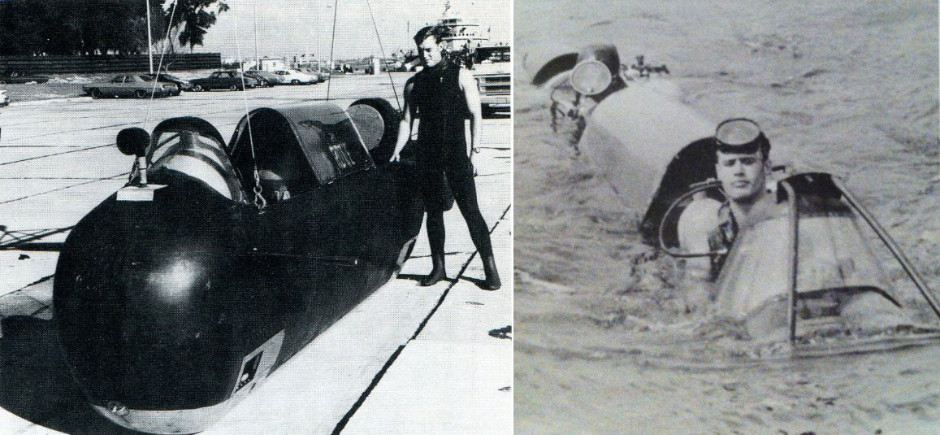
SDV Mk.VII
It was now that tragedy struck; having survived the SDV incident off the enemy coast, the team was flown back to rendezvous with the submarine on the night of 5th June. The return to the submarine would use the ‘cast’ method whereby the men would jump into the water from about 20ft or less, and then dive down to lock in to the submarine while it was submerged. To do this, the helicopter first had to find the submarine maintaining radio silence to avoid giving its position away. The submarine would raise a periscope with a rotating infrared beacon showing, and the helicopter would home in on this. In the atrocious weather this was easier said than done, and several passes across the expected rendezvous area had to be made. They even accidentally flew over the North Vietnamese coast after mistaking a dwelling for the submarine’s signal light. Eventually, as fuel was running low, they found the submarine. The helicopter was too high, the airspeed too fast and the tailwind added another twenty or so miles per hour to the equation. Jumping from the helicopter into the sea was just not safe, but the signal to jump was somehow given and leading from the front, Lt. Dry was the first to jump. The four men jumped from about 50-60ft (15-18m).
Lt. Dry broke his neck and was killed immediately on impact with the water, another of the men was unconscious and the last two were seriously shaken. As the two conscious men went to the aid of their unconscious teammate and searched for Dry, they also discovered that the flashing light spotted by the helicopter wasn’t the Grayback but a distress flare from another the SDVs which had been practicing launch and recovery and had also got into trouble. With North Vietnamese patrol boats detected the Grayback had actually signaled the helicopter to abort the drop but it had not got through in time. Eventually the four men from the SDV, the two conscious men from the helicopter drop and their unconscious teammate found Dry’s lifeless body. They were not detected by the patrol boats and were picked up by rescue helicopter the next morning.
Operation THUNDERHEAD continued for several days with the submarine relying on its periscope to watch for the escaped prisoners, but was soon called off due to the ever-reducing chances of success which was in part due to the coincidental US mining of coastal rivers and ports.
Lt. Dry was an inspirational leader well-liked by his men and those who met him, and the exact circumstances of his tragic death are still discussed today. The reason for this is because the mission was covered up due to its secrecy and the true circumstances of his death not told to his family, but details leaked out over the years. Because of the desire to maintain secrecy the official roll records him as “killed in Training” (KIT) rather than in action (KIA). Despite this he is held to be the last SEAL or UDT man killed in the Vietnam War.
Sadly the whole mission was in vain as the prisoners had called off their escape due to the slim chances of success and fears of the retribution against those left behind. They could not communicate this to the Navy in time and the Submarine, SEALs and UDT men risked their lives waiting for the prisoners who were not on their way. Much of the success of SEAL operations in Vietnam was that they operated with a lot of independence and using their own intelligence sources. They sought permission rather than direction. Operation Thunderhead is a regrettable example of what happens when missions were planned centrally with dubious intelligence and as it turned out, poor equipment. RIP Lt. Dry.
Related articles (Full index of popular Covert Shores articles)

 SDV Mk.9 SEAL Delivery Vehicle
SDV Mk.9 SEAL Delivery Vehicle

 Wholphin X2, Dolphin X1 and Piranha SDV-X
Wholphin X2, Dolphin X1 and Piranha SDV-X


 Lockheed S301i, S351 and S302 Dry Combat Submersibles
Lockheed S301i, S351 and S302 Dry Combat Submersibles


 USN Navy SEAL's UOES3 (Button 5.60) Dry Combat Submersible (DCS)
USN Navy SEAL's UOES3 (Button 5.60) Dry Combat Submersible (DCS)

 SWSC (Shallow Water Combat Submersible) US Navy SEALs next gen' SDV
SWSC (Shallow Water Combat Submersible) US Navy SEALs next gen' SDV


 CCH (Combat Craft Heavy) SEALION and Alligator Semi-Submersible Boats
CCH (Combat Craft Heavy) SEALION and Alligator Semi-Submersible Boats

 USS Jimmy Carter (SSN-23) Special Mission submarine
USS Jimmy Carter (SSN-23) Special Mission submarine

 USS Parche spy sub par-excellence
USS Parche spy sub par-excellence

 USS Halibut
USS Halibut

 First DDS - Type-IIIA U-Boat
First DDS - Type-IIIA U-Boat
THE book on Special Forces subs Covert Shores 2nd Edition. A world history of naval Special Forces, their missions and their specialist vehicles. SEALs, SBS, COMSUBIN, Sh-13, Spetsnaz, Kampfschwimmers, Commando Hubert, 4RR and many more.
Check it out on Amazon


